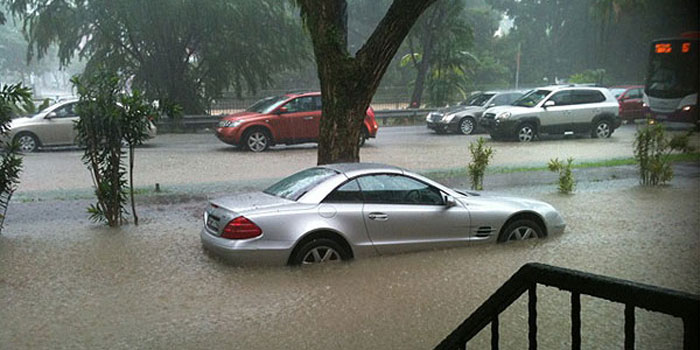This year’s edition of the UN Climate Change Conference, also known as COP19, will commence today in Warsaw, Poland.
Over 10 days, delegations from more than 190 countries – including one from Singapore – will gather to negotiate global solutions to mitigate, and adapt to, the impacts of climate change.
Below are 8 key factors on how climate change can impact Singapore.
1. Sea level rise
Source: Sgag
For low-lying island-states like Singapore, climate change is a matter of national survival. A rise in sea levels threatens to inundate large parts of the island, of which 30% is less than 5m above sea level.
According to studies, the sea level surrounding Singapore has risen by approximately 0.05m over the past 15 years, and is predicted to further rise by between 0.24m to 0.65m by 2100. Unless you live on the summit of Bukit Timah Hill or Pinnacle at Duxton, your home might not be safe from being underwater.
2. Coastal regions
When sea level rises, our favourite coastal hang-out spots may encounter increased wave erosion or be permanently underwater. Beach outings at Sentosa or East Coast could be a thing of the past.
3. Fresh water availability
Source: Sgag
Although we are now famous for having the ability to drink toilet water, a large portion of our water supply still comes from local reservoirs.
Climate change can reduce our availability of water either through an increased incidence of drought, or through saline intrusion – which happens when seawater creeps into and contaminates our reservoirs.
4. Flash floods
Source: Sgag
Flash floods occur when our drainage system fails to direct rainwater away from low-lying areas more quickly than the rate of precipitation. Because it may increase the intensity and frequency of rainfall episodes, climate change may explain why we see more flash flood occurrences.
Perhaps it’s time for SBS Transit and SMRT to add a few upgraded sampans to their fleet of buses?
5. Biodiversity damage
Studies have predicted that the average temperatures in Singapore might increase by 2.7-4.2 °C between now and 2100.
This could spell disaster for Singapore’s rich flora and fauna, which includes many species that are sensitive to changes in temperature. Furthermore, minor sea-level changes to coastal environments would mean that sensitive ecosystems, such as the intertidal zone at Chek Jawa, may be wiped out.
6. Public health
Source: Ebay
Vector-borne diseases, such as dengue fever, are potentially fatal. We already observe that warmer periods during the year tend to be correlated with a higher incidence of dengue cases, because mosquitoes reproduce and grow faster in hotter conditions. With temperatures set to rise, mosquitoes will likely become more common, irritating, and dangerous.
7. Heat stress
Source: Sgag
As instances of warm weather increase in frequency and severity, the elderly, sick, and those who cannot afford air-conditioning will face greater vulnerability to heat stress and discomfort. Several high-profile heatwaves in the United States, Europe, Russia, and Australia have already claimed hundreds of lives due to hyperthermia or dehydration. Army boys can expect more water parades.
8. Food security
Source: Sgag
Singapore imports more than 90% of the food we consume. This means that we are vulnerable to unexpected shocks in global food prices and availability when extreme events – such as cyclones, floods, and droughts – affect crop output in other parts of the world.
Scientists have argued that climate change tends to increase the likelihood, severity and duration of these extreme weather events. So, lovers of roti prata, nasi brayani, and chicken rice, take note!
Top photo from here.
If you like what you read, follow us on Facebook, Instagram, Twitter and Telegram to get the latest updates.








